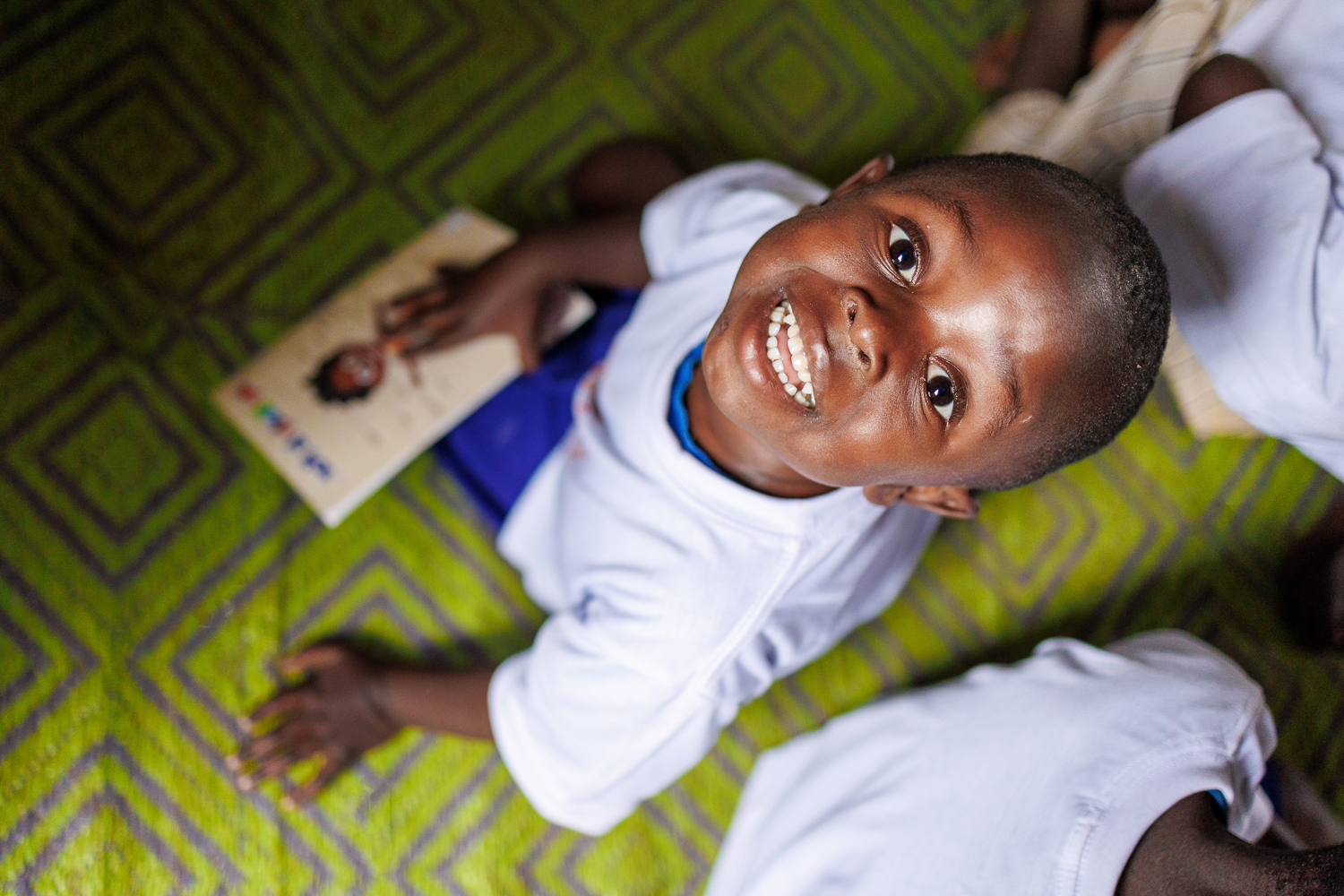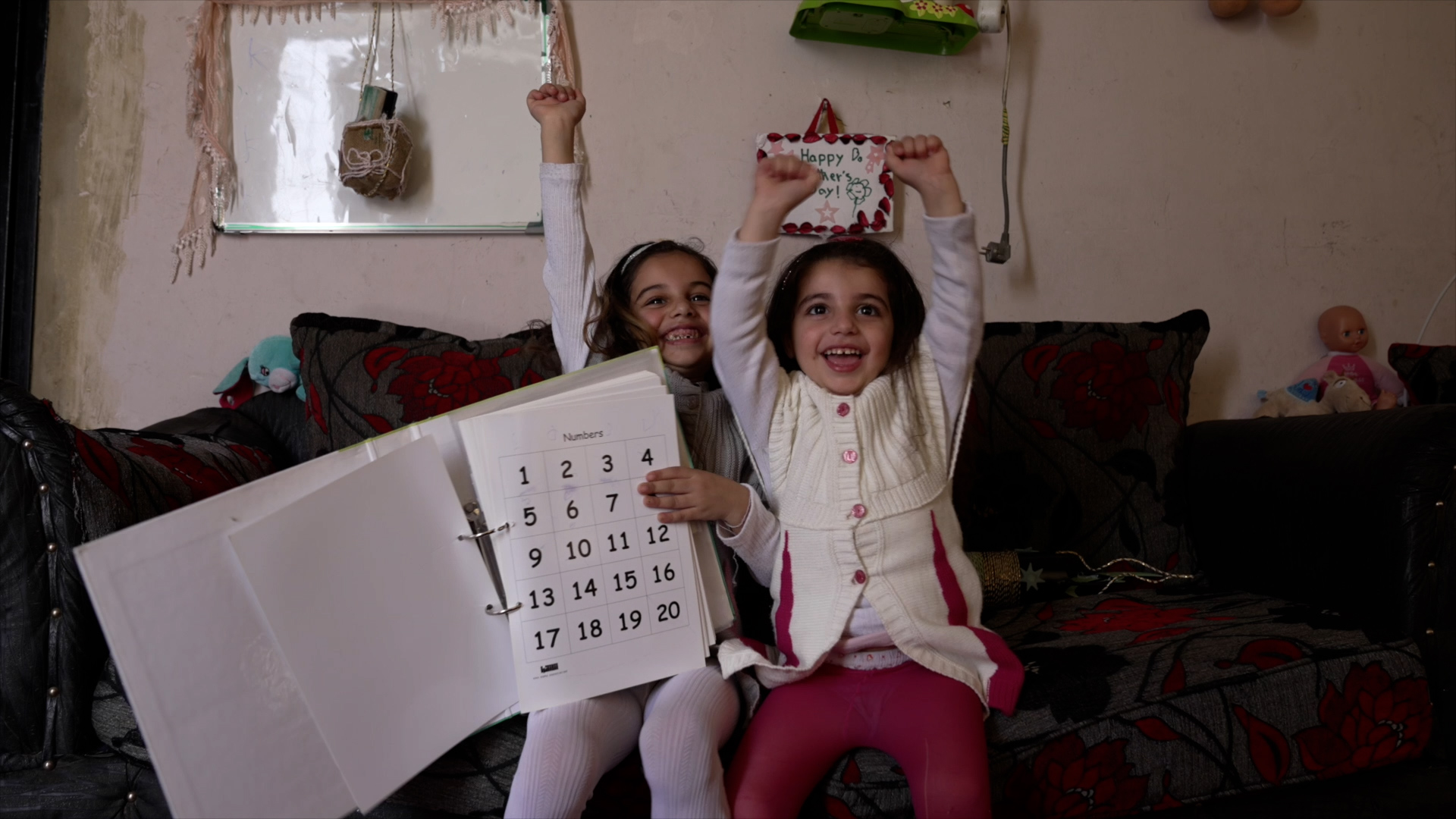
How a child’s brain develops from the womb to age five
Childcare, Early childhood development
By the time a child reaches five years old, 90% of their brain has already developed - which means the progression from birth to school is the most important time of their lives. A child’s brain develops in different stages. As part of Theirworld's #5for5 campaign on investment in early childhood development, we look at some of the changes going on inside the womb, from birth to three years old and from three to five.
In the womb
Just 16 days after conception – way before you know you are pregnant – your unborn baby’s neural plate (the foundation of your baby’s brain and spinal cord) is forming.
“At the same time, neural cells start travelling throughout the embryo to form the beginnings of nerves,” says Heidi Murkoff, the author of What to Expect.
The nerve cells form but are not actually developed as a brain during the first 12 weeks.
“Impulses begin to fire without pattern or direction,” explains the Developing Human Brain website. “Sensory organs and nerves are not developed at this point, so the foetus does not feel pain.”
Over the next few months, the sensory organs and nerves begin to develop.
Research shows that outside influences can affect the unborn child’s brain development – both positively and negatively.
In fact, the sounds made by dolphins can stimulate an unborn baby’s brain even more than music or talking to your “bump”!
“The high-range sounds dolphins emit are registered by the baby. These sounds stimulate the nerves in the brain and the child’s audible senses,” said Elizabeth Yalan, dean of the Obstetrician College of Peru.
Neuroscientists can now identify patterns in brain activity that appear to be associated with some types of negative early experiences.
The long-term effects of early stress, poverty, neglect and maltreatment were well-documented and virtually uncontested years before scientists could “see” them with brain-scanning tools.
While most mothers in developed countries are given every opportunity to stimulate their unborn child, nourish it and protect it, it’s often a very different story for pregnant women in the developing world.
Birth to age three
A child’s brain undergoes a rapid period of development during these three years , producing 700 new neural connections every second. When a baby is born, 100 billion neurons – or brain cells – have already been produced.
The future of a child’s developing brain is in our hands. Parents, caregivers and family members all have a part to play in helping to form a baby’s brain.
Scientists are rapidly untangling how a child goes from seeing images when just born to being able to feed, talk, play and communicate by the age of three.
“Different stimuli and tasks, such as hearing a lullaby or reaching for a toy, help establish different neural networks,” wrote Yudhijit Bhattacharjee in an article for National Geographic.
Early experiences affect the development of brain architecture, which provides the foundation for all future learning, behaviour, and health. Just as a weak foundation compromises the quality and strength of a house, adverse experiences early in life can impair brain architecture, with negative effects lasting into adulthood. Center on the Developing Child, Harvard University, USA
“Between the ages of one and five, the brain goes through cycles of growth and streamlining, with experience playing a key role in engraving the circuits that will endure.”
Judit Gervain, a cognitive neuroscientist at Paris Descartes University, uses behavioural methods, optical brain imaging and electrophysiological measures to understand how babies learn their native language.
She says: “For a long time we had this linear view. First, babies are learning sounds, then they are understanding words, then many words together.
“From recent results, we know that almost everything starts to develop from the get-go. Babies are starting to learn grammatical rules from the beginning.”
Researchers have shown that children around two and a half years old are savvy enough to correct grammatical mistakes made by puppets. By the age of three most children seem to master a considerable number of grammatical rules.
Despite coming prewired with huge capabilities and potential, the brain depends heavily on environmental input to keep “growing” and developing.
Scientists are now discovering precisely how that development is moulded by the interplay between nature and nurture.
Dr Alison Gopnik, a professor of psychology and affiliate professor of philosophy at UC Berkeley and author of Philosophical Baby, said: “One of the biggest changes I think that’s happened most recently is how amazingly much babies know from the time they’re born.
“So, far from being a blank slate, even the youngest babies already seem to have some basic ideas about other people, about language, about the physical world about the objects around them.

“And one of the evolutionary ideas is that early period … is where we’re just free to learn and explore without actually having to put all that learning to work. “The picture is that having a caregiver who’s actually willing to invest in taking care of you is one of the prerequisites for being able to do all this amazing learning that we know babies are capable of.”
Age three to age five
A five-year-old’s brain uses twice as much glucose (the energy that fuels the brain) as that of a full-grown adult, researchers at Northwestern University anthropologists have discovered.
The study shows that because the brain needs so much, the body doesn’t grow as rapidly.
“Our findings suggest that our bodies can’t afford to grow faster during the toddler and childhood years because a huge quantity of resources is required to fuel the developing human brain,” said Christopher Kuzawa, an IPR biological anthropologist and first author of the study.
“As humans we have so much to learn – and that learning requires a complex and energy-hungry brain.

“After a certain age it becomes difficult to guess a toddler or young child’s age by their size. Instead you have to listen to their speech and watch their behaviour.”
Kuzawa said the study suggests this is no accident. He added: “Body growth grinds nearly to a halt at the ages when brain development is happening at a lightning pace because the brain is sapping up the available resources.”
And because the preschool years are a period of extremely rapid brain development, it is crucial that this age group receive proper stimulation and nutrition.
Children living in poverty, deprivation, abusive and war-torn environments are most at risk from not reaching their full potential because they are deprived of getting their most basic needs met.
Just by talking and interacting with a young child, you are increasing their brain development – and increasing their “usable” vocabulary. This period from age three to five is critical for language skills.
“On average, a child’s vocabulary expands from 55 words at 16 months to 225 words at 23 months to 573 words at 30 months,” according to Professor Usha Goswami, Director of the Centre for Neuroscience in Education at the University of Cambridge.
More news

MyBestStart programme gives young girls the education they deserve
